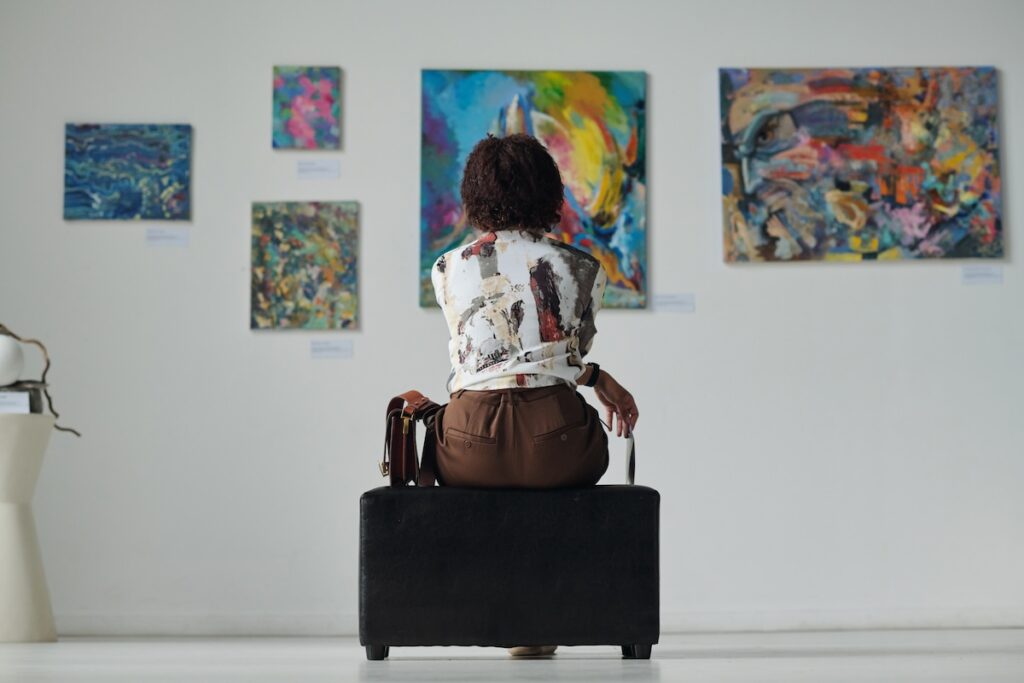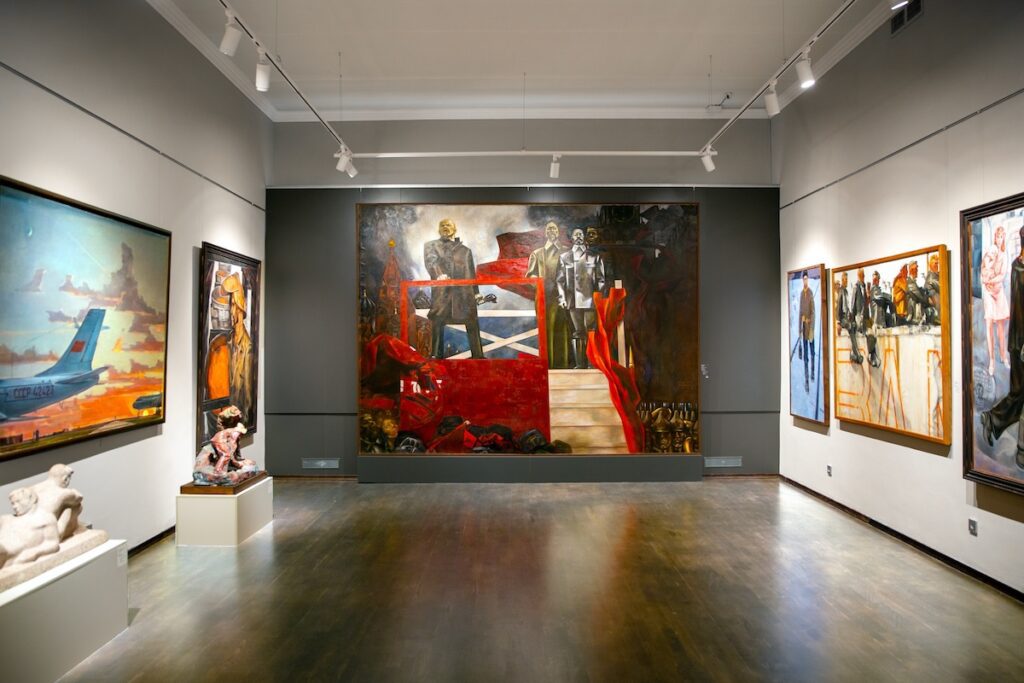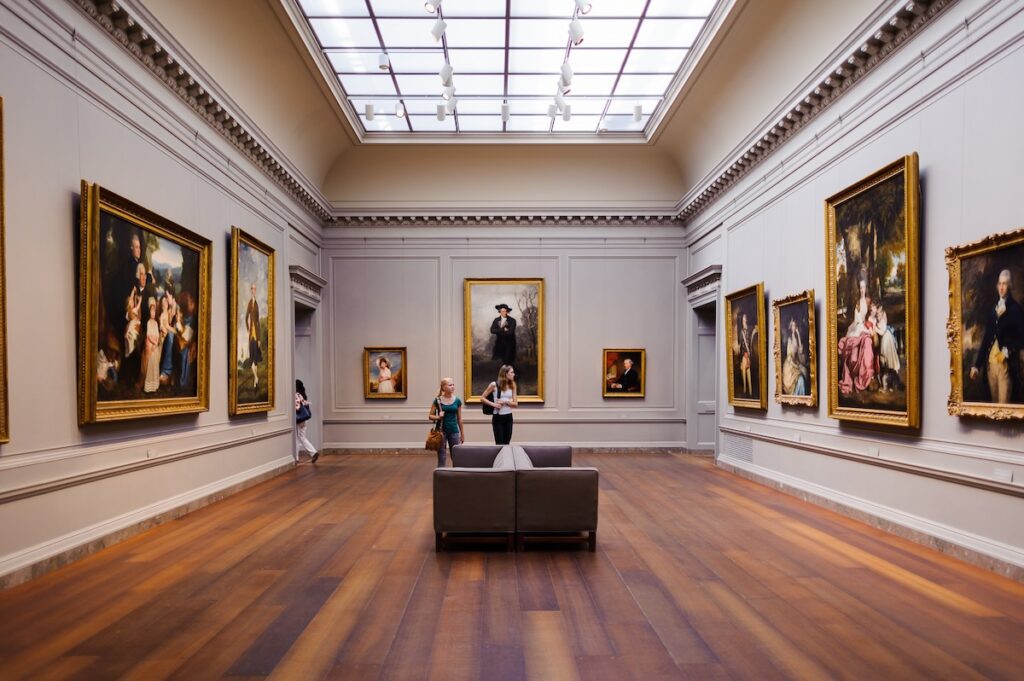This website uses cookies so that we can provide you with the best user experience possible. Cookie information is stored in your browser and performs functions such as recognising you when you return to our website and helping our team to understand which sections of the website you find most interesting and useful.
The art of investing: where creativity meets capital
By Sam Cook | 16 January 2024 | Arts, Wealth
JP Morgan on the strength of the international art market and advice for collectors
 Sam Cook is Head of Specialty Lending Solutions for JP Morgan International Private Bank
Sam Cook is Head of Specialty Lending Solutions for JP Morgan International Private Bank
In the last few years, we have experienced first-hand the tremendous strength of the art market, with significant activity among our clients for purchases and sales, primarily in the blue-chip arena.
This strength was particularly evident in 2021 and 2022 with some notable, and well publicised, sales and several record prices achieved for blue-chip artists. While 2023 saw some strong sales, it is evident that the art market experienced a period of correction with overall sales down significantly year-over-year.
Following the exuberance of the post-Covid 19 period, the retrenchment to a new environment in the art market can largely be attributed to the significant uncertainty across almost all major economies due to soaring inflation, reaching a peak of 9% in the US, and the resultant hiking of interest rates — in the US, interest rates have increased by 5% during this period.  For many, a recession was considered a likely outcome. While a recession cannot be completely discounted going forward, there is general consensus that the goldilocks scenario of a soft-landing — lower inflation without a recession — will be achieved in the US.
For many, a recession was considered a likely outcome. While a recession cannot be completely discounted going forward, there is general consensus that the goldilocks scenario of a soft-landing — lower inflation without a recession — will be achieved in the US.
As inflation continues to fall across most major economies, it is our expectation that interest rates will reset to a lower level, albeit higher than the pre-Covid period. With this backdrop of reduced uncertainty and a more favourable economic outlook the art market is likely to experience a more favourable environment in 2024.
Part of my job is to help clients navigate any market environment and experience the full spectrum of what their wealth can create. Their particular passions should be an integral part of their holistic wealth plan over a multi-year period. Art is a beautiful example of where passions can fit into a portfolio, with art being used as a unique asset to support their overall goals.
An art collection, handled well, can provide financial flexibility, serve a collector’s larger wealth plan and help them create a lasting legacy. It is important, however, to recognise that art is an unusual asset for many reasons, such as the owner’s emotional attachment to it, artwork’s inherently illiquid nature and its relative stability over the long term. Nevertheless, whatever the acquisition price, art is an asset.  Whether it be to fund additional purchases, to provide bridge financing to a sale, or simply to release some equity in their collection for other purposes, recognising the rationale for the financing is critical.
Whether it be to fund additional purchases, to provide bridge financing to a sale, or simply to release some equity in their collection for other purposes, recognising the rationale for the financing is critical.
Understanding a collector’s motivations for owning art and their future goals — for their collection and overall wealth — is the starting point in defining how an art financing can be beneficial to them. For example, an individual that collects primarily based on the emotional value of artwork is likely to have different priorities to an individual whose primary motivation is investment returns.
We understand the importance of a flexible and bespoke approach to art financing. We consider a collector’s full financial picture, including assets and liabilities, liquidity needs and short-term and long-term goals as well as their art ownership structure to determine the optimal financing approach.
Flexibility is achieved through:
The location of the artwork: the collector can retain the artwork in their possession, hold it in an art warehouse, or have the art on short- or long-term loans to a museum or gallery, across a number of jurisdictions in Europe, the UK, the United States and Canada.  What art can be provided as collateral: taking a client-centred approach — as opposed to an asset approach — allows for a variety of art to be provided as collateral. Acceptable artworks are not limited to those by blue chip artists, or only those from the modern and contemporary markets.
What art can be provided as collateral: taking a client-centred approach — as opposed to an asset approach — allows for a variety of art to be provided as collateral. Acceptable artworks are not limited to those by blue chip artists, or only those from the modern and contemporary markets.
Flexibility on financing terms: from short-term bridges to mid-term committed facilities, the structure of the financing, or the ability to use the proceeds for any purpose, the financing is tailored to the individual’s needs.
Art goes beyond aesthetics. It transcends economic environments and can not only provide cultural enrichments but portfolio diversification. We have built a breath of knowledge over the decades working with our clients and as one of the oldest and largest corporate art collectors in the world.
Irrespective of a collector’s motivation for owning art, a thoughtful borrowing strategy that is tied to those artworks can often be a smart tool to help build and maintain a collection as well as to support the collector’s overall goals. It should be a component of any thoughtful wealth planning analysis.







